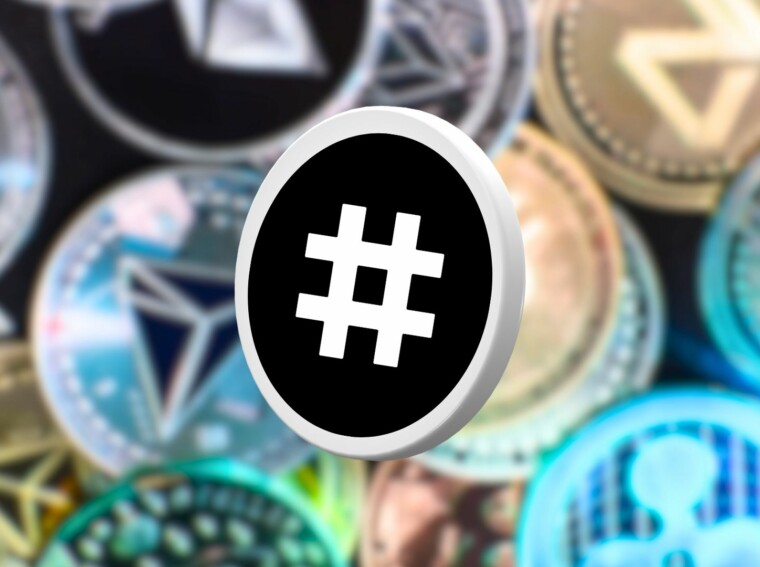- Cryptocurrency Reserve Rights token (RSR) is transforming the crypto landscape with its unique dual-token system.
- Launched in 2019, the Reserve Protocol aims to combat cryptocurrency volatility and unlock global adoption.
- RSR’s role is crucial in stabilizing the Reserve stablecoin (RSV) and supporting a more reliable digital economy.
Cryptocurrency is a dynamic and ever-evolving space, continually introducing innovative solutions to address the industry’s challenges. One such solution is the Reserve Rights token (RSR), launched in 2019 as part of the Reserve protocol. This article aims to provide a comprehensive understanding of the Reserve Rights Token, its role in the crypto ecosystem, and how it works.
The Birth of Reserve Rights Token
The Challenge of Volatility
The cryptocurrency industry, born with the advent of Bitcoin over a decade ago, has seen remarkable growth. However, it has also grappled with a critical issue—volatility. The wild price swings of cryptocurrencies have hindered their utility as a stable store of value, a medium of exchange, and a standard of deferred payment.
Reserve Protocol’s Ambitious Vision
To combat this volatility and unlock the full potential of cryptocurrencies, the Reserve Protocol was launched in May 2019. The protocol introduced a dual-token stablecoin platform, aiming to provide global scalability and stability to the crypto market. According to the Reserve whitepaper, existing cryptocurrencies’ volatility significantly reduces their usefulness, and a stablecoin could serve as a reliable and stable alternative.
The Triad of Reserve Tokens
Within the Reserve protocol, three tokens play vital roles:
- Reserve Stablecoin (RSV): RSV, launched in 2019, is designed to be a stablecoin backed by a basket of tokenized assets, with each RSV maintaining parity with the US dollar ($1). Its mission is to create a robust ecosystem, especially for developing countries, and facilitate cost-effective remittances.
- Reserve Rights Token (RSR): RSR, unlike RSV, is volatile in nature and serves as a utility token within the ecosystem. RSR holders have the privilege to vote on governance proposals and play a crucial role in stabilizing RSV’s value at $1.
- Collateral Tokens: These are assets held by the Reserve smart contract to back the value of the Reserve stablecoin (RSV). They play a pivotal role in maintaining the stability of the Reserve ecosystem.
How Does Reserve Rights Token Work?
The Ethereum Blockchain
Reserve tokens, including RSR and RSV, reside on the Ethereum blockchain. The primary objective of the Reserve Protocol is to ensure that RSV maintains its peg to the US dollar, always valuing 1 RSV at $1.
Stabilization Mechanism
The protocol employs a dynamic stabilization mechanism. When the RSV token’s price falls below $1, the protocol purchases additional RSV tokens from the market to increase demand, ultimately driving the token’s price back to $1 on exchanges. Conversely, if the RSV price surpasses $1, the protocol mints or exchanges RSV tokens for other tokenized assets or RSR to decrease its price and maintain stability.
Role of RSR Token
The RSR token’s primary function is to recapitalize the market if the collateral assets held by the Reserve Protocol decrease and it can no longer guarantee the existing RSV tokens. Consequently, an increase in the supply of RSV results in a decrease in the quantity of RSR tokens.
The Visionaries Behind Reserve Rights Token
Reserve Rights Token was founded in 2019 by Nevin Freeman, the CEO of the Reserve project, who boasts a successful entrepreneurial track record. The project’s co-founder, Matt Elder, serves as the Chief Technology Officer (CTO) and brings a wealth of experience from Google, Quixey, and the Linux Standard Base.
The Circulation of Reserve Rights Tokens
The Reserve Rights token initially had a maximum supply of 100,000,000,000 RSR tokens. At present, approximately 50,600,000,000 RSR tokens are in circulation. It’s worth noting that the project’s team has indicated that the token supply may undergo changes.
Conclusion
The Reserve Rights Token (RSR) is part of an ambitious project aiming to bring stability and reliability to the cryptocurrency market. Its innovative dual-token system, backed by a diverse basket of cryptocurrencies, addresses the industry’s volatility challenge. With a dynamic stabilization mechanism and a growing ecosystem, RSR plays a pivotal role in supporting the Reserve Protocol’s vision of a more stable and accessible digital economy.

